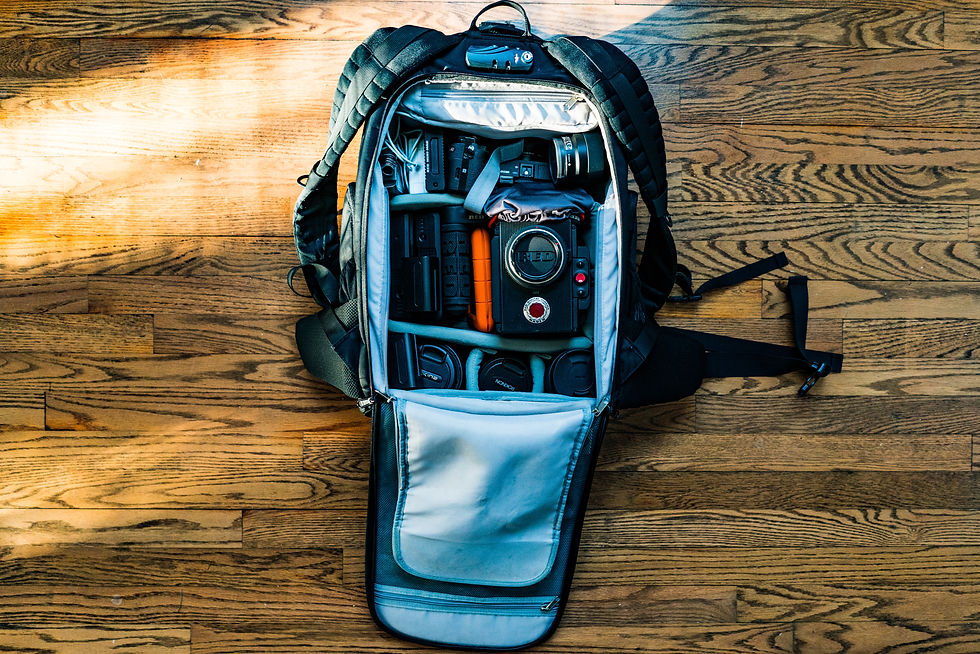How to Price Your Photography Sessions: Find Where You Might Fit
- Ben Gifford

- Sep 22
- 3 min read

One of the most confusing parts of becoming a photographer is figuring out how to price your photography. Should you work for free while you’re learning, or set professional rates right away? The truth is—pricing depends on where you are in your journey.
Here’s a step-by-step guide to help you find where you fall and decide how much to charge for your photography sessions, which does not include larger scaled events such as weddings.
Stage 1: The Beginner — Building Your Portfolio
Who this is for: You just picked up a camera, or you’ve only shot for friends and family. You don’t have a strong portfolio yet.
What to charge: $0 – $50 (or trade for testimonials)
Free or very low-cost sessions make sense here. Your goal is experience, not profit.
Key skill milestones at this stage:
Learning how to use your camera (often still in Auto mode)
Practicing with natural light and basic compositions
Figuring out editing software (Lightroom, Capture One, etc.)
Delivering your first complete galleries to clients
Tip: Don’t stay here too long—once you’ve done a handful of shoots and gained confidence, it’s time to move up.
Stage 2: The Hobbyist — Covering Your Costs
Who this is for: You’ve built a small portfolio, you know your camera, and you’re delivering consistent results. You’re still part-time or treating it as a side hustle.
What to charge: $100 – $250 per session
At this stage, you should be charging enough to cover:
Travel and gear upkeep
Editing software
Your time spent shooting and editing
Key skill milestones to move out of this stage:
Confidently shooting in manual mode (no longer relying on Auto)
Understanding exposure triangle (aperture, shutter speed, ISO)
Delivering polished, edited galleries consistently
Beginning to identify your personal style
You’re no longer “shooting for free”—you’re starting to operate like a business.
Stage 3: The Part-Timer — Competing in the Market
Who this is for: You’re regularly booking clients, word of mouth is strong, and people see you as “the photographer” in your circle or community.
What to charge: $300 – $500 per session (depending on your area)
You’re now competing in your local market. Clients see you as a professional, and your pricing should reflect that. Undercutting too much can make it harder to grow—and undervalues the industry.
Key skill milestones at this stage:
Consistent editing style that matches your brand
Understanding client experience (contracts, communication, delivery timelines)
Using advanced lighting (strobes, off-camera flash, or modifiers)
Handling different scenarios with confidence (low light, tricky weather, groups)
Tip: Research what other photographers near you charge for similar sessions and make sure you’re in line with market standards.
Stage 4: The Professional — Full-Time Photographer
Who this is for: Photography is your career, not just a side hustle. You’re balancing expenses, taxes, and your living costs.
What to charge: $600+ per session (or create packages)
At this level, your pricing is built around:
Your yearly income goal
How many sessions you can realistically take
The value of your brand, style, and client experience
Key skill milestones at this stage:
Clear branding and strong online presence
Efficient workflow from booking to delivery
Offering packages, prints, and upsells
Managing taxes, insurance, and business expenses like a pro
Example: If you want to earn $60,000/year and can shoot 100 sessions, your average session price should be $600.
Stage 5: The Premium Brand — Specialized & High-End Work
Who this is for: You’ve mastered your niche (weddings, branding, commercial work, fine art, etc.) and built a reputation that sets you apart.
What to charge: $1,000+ per session or project-based pricing
At this point, clients aren’t just hiring you for photos—they’re hiring you for your expertise, creativity, and the experience you provide.
Key skill milestones at this stage:
Highly recognizable personal style
Strong demand for your work (clients seek you out)
Large portfolio with standout projects or publications
Specialized gear and techniques that fit your niche
Premium, white-glove client experience
Final Thoughts
Where you fall in these stages depends on your experience, portfolio, and goals. Start with free or low-cost shoots if you’re new, but don’t stay there forever. As your skills grow, so should your pricing.
Photography is both an art and a business—and knowing your worth is the key to turning passion into profit.




Comments